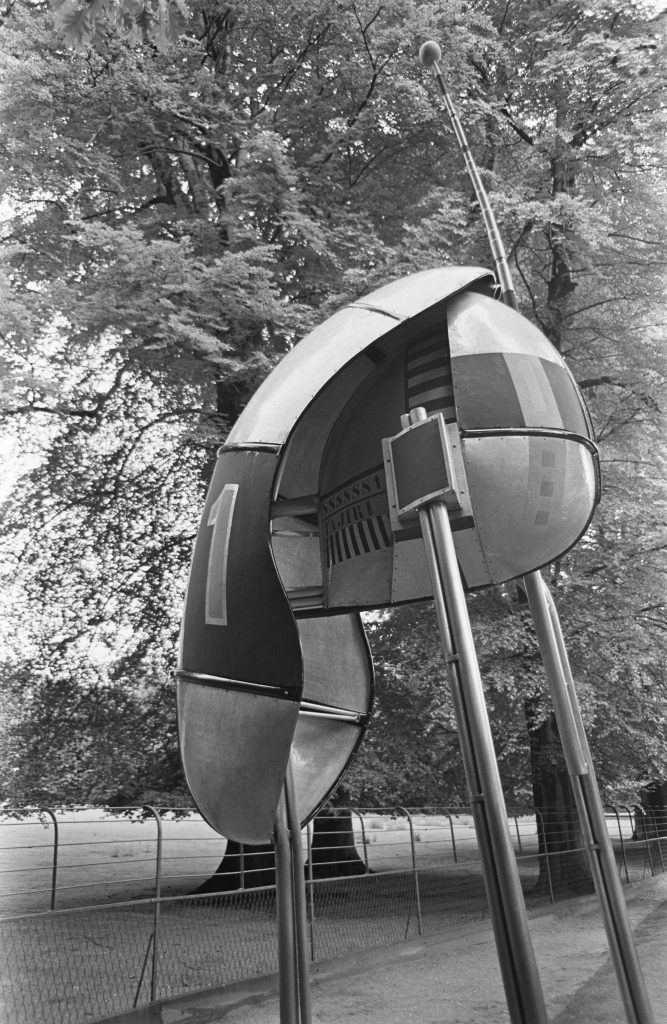Shinkichi Tajiri, s.s.s.s.s.s. no. 1, 1966

Shinkichi Tajiri, s.s.s.s.s.s. no. 1, 1966, aluminium, staal en plexiglas, 6 meter hoog
Shinkichi Tajiri (1923-2009) heeft in zijn leven heel wat meegemaakt. Zo wordt hij in het begin van de Tweede Wereldoorlog met zijn familie vanwege hun Japanse afkomst gevangen gezet in een kamp in de staat Arizona. Na twee jaar komt Tajiri vrij wanneer hij als militair in dienst treed voor een vrijwilligerseenheid van het Amerikaanse leger. Als hij na de oorlog terugkeert naar Amerika wordt Tajiri vanwege de discriminatie van de Japanse gemeenschap opnieuw geconfronteerd met zijn afkomst. Hierop besluit hij in 1948 te verhuizen naar Parijs, waar hij lessen volgt van Ossip Zadkine en Fernand Léger. Al zijn werk is naar eigen zeggen verweven met zijn ervaringen en ‘psychologische littekens’.[1]
Het werk s.s.s.s.s.s. no. 1 uit 1966 ziet er op het eerste gezicht eerder uit als een futuristisch gebruiksvoorwerp in plaats van een kunstwerk. Door de antenne met microfoon doet het zes meter hoge object denken aan een nieuw soort communicatieapparaat. Verder heeft het werk geen duidelijke herkenbare elementen. Met wat fantasie kan het ook als een ruimteschip, een robot of een insect worden opgevat. Het grote cijfer ‘een’ op de zijkant van het werk is misschien afgeleid van de nummers die destijds op raceauto’s staan, waar Tajiri zich onder andere door laat inspireren. In het voor veel mensen vertrouwde Sonsbeek zal Tajiri’s werk wellicht als vervreemdend zijn ervaren.
In eerste instantie is het alsof Tajiri met een werk als s.s.s.s.s.s. no. 1 zijn bewondering toont voor nieuwe machines uit de jaren zestig. De serie Machines is echter juist bedoelt als protest tegen de manier waarop machines worden ingezet in oorlogen (zoals destijds in de Vietnamoorlog). Tajiri bekritiseert overheden die vele miljoenen investeren in militaire machinerie om mensen te doden. Hij betreurd het dat zijn opvattingen meestal niet worden begrepen. Vanwege hun schoonheid en vakmanschap worden zijn werken vaak geïnterpreteerd als verering van het militarisme.[2]
[1] R. Vercauteren (red.), De Wachters van Shinkichi Tajiri, Venlo 2007, pp. 15-19, 23.
[2] G. Verhoogt, “”Al mijn werk is het resultaat van wat ik heb meegemaakt””, in: A. Dijkhuis, J. Engels en G. Verhoogt (reds.), Tajiri: Seed no. 4, Eindhoven 2009, p. 13.
